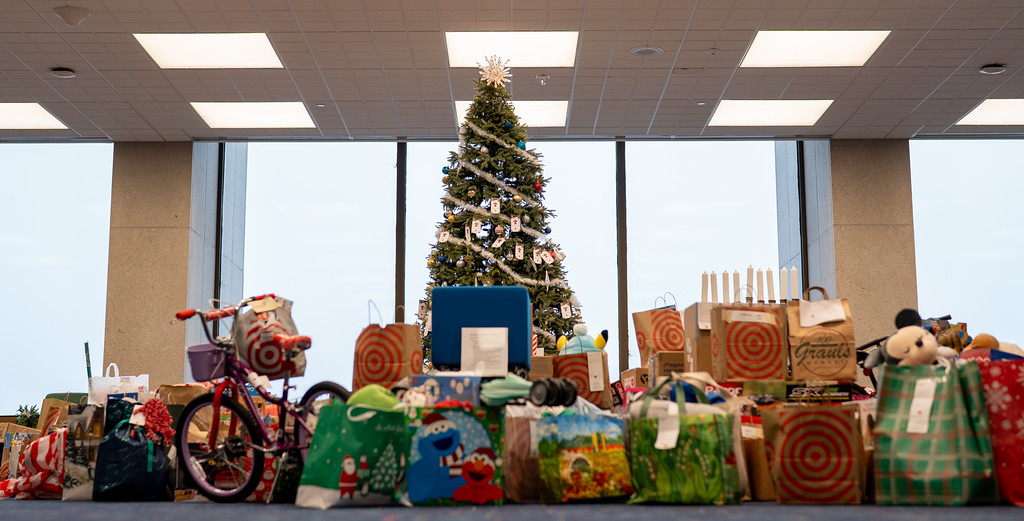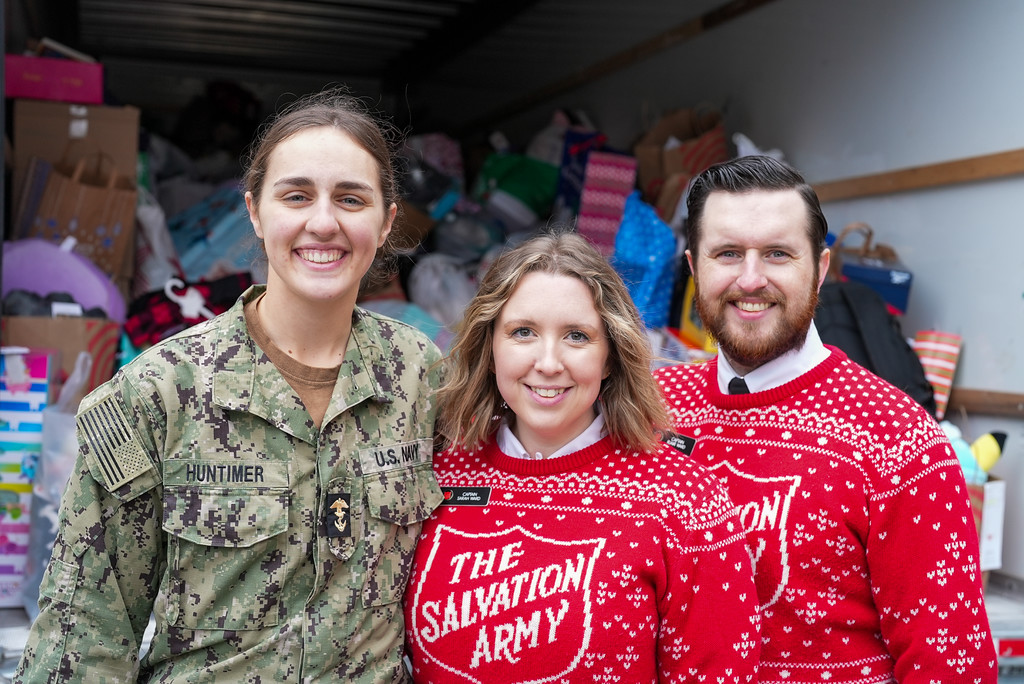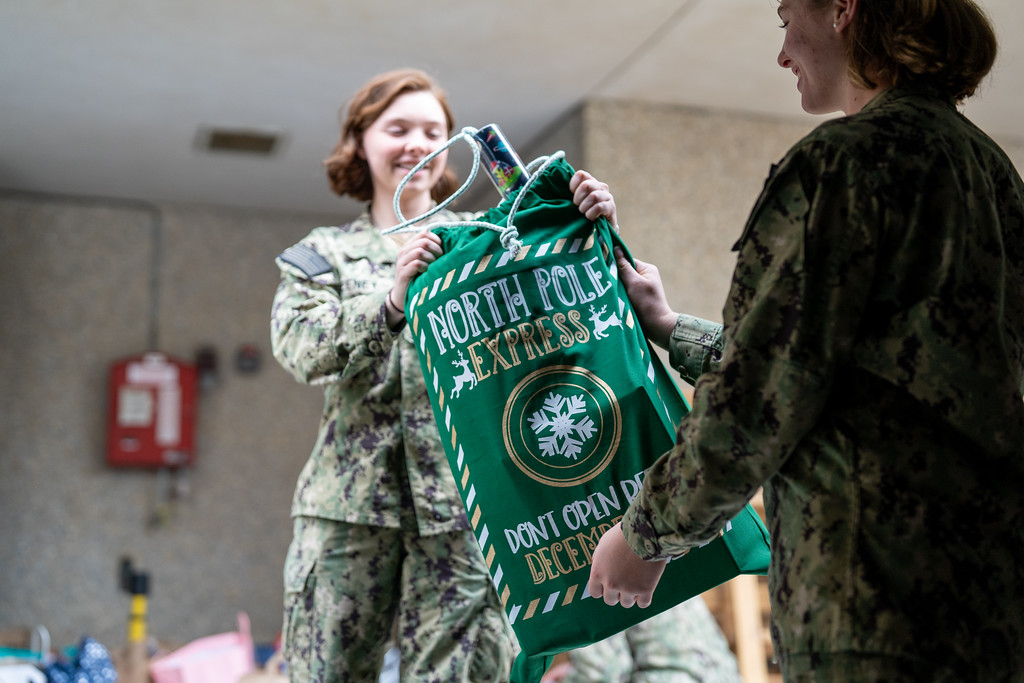Angels in Annapolis: A Look Into The Naval Academy’s Angel Tree Program
It all began in a small town in neighboring Virginia in 1979. A new shopping mall had just opened in Lynchburg, and local Salvation Army officers Captain Charles White and Captain Shirley White saw an exciting potential opportunity in partnering with them in The Salvation Army’s Christmas Kettle effort.
 While the shopping mall was unable to have kettles, they were still very interested in collaborating with The Salvation Army in giving back to the community during the holiday season. Management offered Charles and Shirley their Christmas tree display in the main concourse to be creatively used in bringing in community engagement and donations.
While the shopping mall was unable to have kettles, they were still very interested in collaborating with The Salvation Army in giving back to the community during the holiday season. Management offered Charles and Shirley their Christmas tree display in the main concourse to be creatively used in bringing in community engagement and donations.
“We thought about how children are given toys and useful items at Christmas through the Army’s toy program,” Shirley recalls. “We also thought about when they go back to school and see their friends in new clothes, and they do not have any because their parents could not afford to buy them for Christmas. We wanted to help with that.”
A walk through the mall led to the officers entering a Hallmark store. Spotting a Christmas card with an illustration of three angels on the front, Shirley had an idea. “What if we cut these and make three Angels out of it, each with a child’s clothing size on the back and hang them on the tree.”
 The idea was an immediate success with a big turnout. The Lynchburg community that year got clothes for 472 children. In the 42 years since, the Angel Tree Program has grown to help millions of children and their families across the country, and the Annapolis community has been one of the most avid participants.
The idea was an immediate success with a big turnout. The Lynchburg community that year got clothes for 472 children. In the 42 years since, the Angel Tree Program has grown to help millions of children and their families across the country, and the Annapolis community has been one of the most avid participants.
The United States Naval Academy is home to the Annapolis area Angel Tree, located in the Nimitz Library, with the annual ceremony held in the same space. The chapter began in 1992 and on average provides Christmas gifts and goods to over 500 local children annually.
Specially named The Giving Tree at the Naval Academy, the program, like other Angel Tree programs, compiles information about each child, a.k.a. “Angel” participating, including their age, clothing size, and gift wishes. Each child’s information is then written down on a paper angel-shaped slip to be hung as an ornament on the Angel/Giving Tree. Once decorated, the U.S. Naval Academy midshipmen host a special tree lighting ceremony to officially commemorate the start of the donation season. Donors are then matched with an Angel (or multiple angels) from the tree to get gifts for. Gifts widely range from toys, bicycles, instruments, electronics, shoes, winter clothing, and more. Once purchased, donors place the unwrapped gifts under the Angel Tree for The Salvation Army team to wrap and give out. The presents are eventually hand-given to the children with anonymous tags/cards from their donor.
 The Annapolis community is especially known for their avid generosity in gift-giving, a local Salvation Army lieutenant noting how common it is for gifts to be worth hundreds of dollars.
The Annapolis community is especially known for their avid generosity in gift-giving, a local Salvation Army lieutenant noting how common it is for gifts to be worth hundreds of dollars.
“It really is difficult to put into word the impact this has on the children of Annapolis,” says Lieutenant Laurie Ferraez. “There are children who would not have a Christmas without this. That’s difficult to see when you’re working with children, so this is one way we can provide them with gifts they want and need.”
No child should wake up Christmas morning with nothing to unwrap, just as no parent should live with the stress and disappointment of not having anything to put under the tree for their child. Charles and Shirley White knew that and because of their dedication and drive to help neighbors in need, millions more children over the last four plus decades have experienced the quintessential childhood magic of Christmas and holiday cheer. “We learned from those we registered as Angels that they just wanted somebody to hear their story,” Shirley White continues, “that somebody cared about what was going on in their lives.”
 The very simple and very human desire of feeling seen and heard is universal, and The Angel Tree program not only serves those whose stories are waiting to be heard, but those who are eagerly willing to listen.
The very simple and very human desire of feeling seen and heard is universal, and The Angel Tree program not only serves those whose stories are waiting to be heard, but those who are eagerly willing to listen.
“[The Angel Tree program] also [gives] volunteers an opportunity to meet with the people. It’s a reciprocal relationship, and not just about us giving somebody something, but a ministry for everybody involved. People wanted to do something for somebody. We gave them the logistics of how to do it.”
By participating in The Salvation Army’s Angel Tree Program, donors get the fulfillment of giving back and making a lasting impact for someone, no matter how big or small. After all, that is what the holidays and presents are for—giving back and showing love and appreciation for those you care about, whether that be your friends, family, colleagues, classmates, neighbors, or even strangers.

